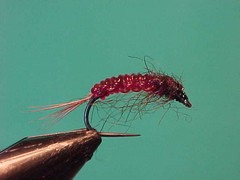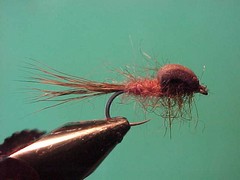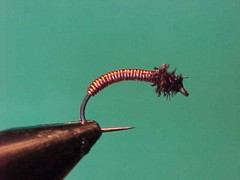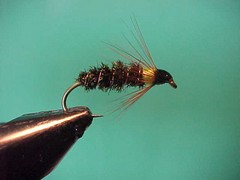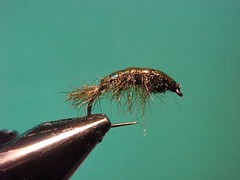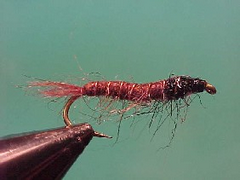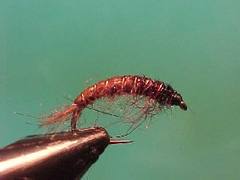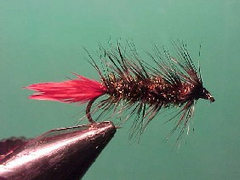Flat knitted nymph
Because the nymphs of many mayflies and caddis spend a good part of their life cycle living under rocks in both still and running water its not surprising that many have taken on a relatively flat form.
This knitted grub has a relatively flat body mimicking many of the naturals and also has plenty of structure on the body suggesting the various body segments.

